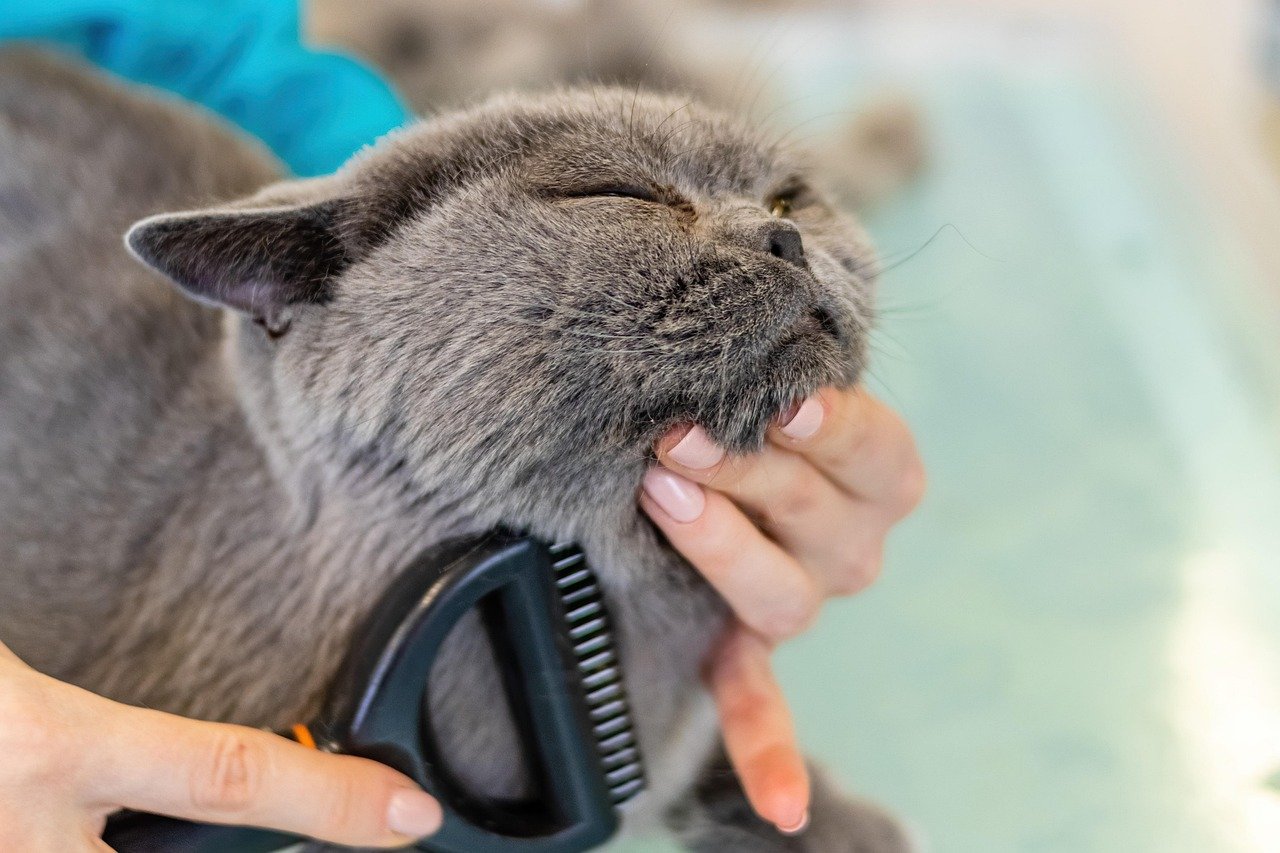Have you ever looked into the eyes of a new cat and wondered what they’re thinking? Bringing a feline friend into your home can feel like opening a door to a mysterious world—one filled with silent glances, quiet paw steps, and gentle purrs. But beneath that fluffy exterior is a sensitive soul, craving not just care and food, but real understanding. Helping a new cat feel emotionally seen isn’t just about meeting their basic needs—it’s about making them feel safe, respected, and truly at home. If you’re ready to go beyond the basics and form a bond that melts even the shyest kitty’s heart, read on. The journey can be magical, unforgettable, and yes—life changing for both of you.
Understanding a Cat’s Emotional World
Cats are often misunderstood as aloof or indifferent, but beneath that cool exterior lurks a complex emotional landscape. They experience a range of feelings—joy, fear, curiosity, and even jealousy. Recognizing that your new cat is not just a pet, but an emotional being, is the first step to making them feel seen. Watch their body language: a flicking tail, flattened ears, or slow blinks can speak volumes. Like humans, cats crave acknowledgment for their emotions. When you treat them as individuals with feelings, you’re building the foundation for a trusting relationship. This awareness helps you respond better to their needs and comforts. The more you tune in, the more your cat will trust and connect with you.
Creating a Safe First Impression

The first few days in a new home can be overwhelming for any cat. Imagine being dropped into a place where everything smells, looks, and sounds different! To make this transition smoother, prepare a quiet room filled with cozy blankets, toys, a litter box, and fresh water. Allow your cat to explore at their own pace. If they hide, don’t force them out—let them come to you when they’re ready. Speak softly and move gently to avoid startling them. Remember, your calm presence sends a signal that they’re safe. By giving them time and space, you let your cat know their comfort matters, which is the first step to making them feel emotionally seen.
Respecting Their Need for Space
Cats are masters of personal boundaries. Some will seek cuddles right away, while others need days or even weeks before they’re comfortable with touch. It’s important to resist the urge to pick up or pet your cat if they’re showing signs of hesitation. Watch for cues like a tucked tail or a sideways glance, which often mean “not yet.” Instead, sit quietly nearby and let them approach you first. This shows respect for their autonomy and helps them build trust at their own pace. By honoring their space, you prove you’re listening to their unspoken needs. Over time, this respect turns into a deeper emotional connection.
Learning Their Unique Communication Style

Every cat has a language all their own. Some are vocal, meowing or chirping to ask for attention, while others communicate through body posture or facial expressions. Pay close attention to their signals—the gentle brush against your leg, the slow blink, or even the way they position their ears. Responding appropriately—like replying to a meow or gently mirroring their slow blink—shows your cat you’re paying attention. Think of it as learning a new dialect; the more fluent you become, the better you can comfort and reassure your feline friend. This effort to understand is a powerful way to make them feel emotionally validated.
Offering Gentle Touch and Affection

Physical affection is a deeply personal experience for cats. Some will leap into your lap, purring with delight, while others need more time to accept touch. Start by extending a finger or hand and letting your cat sniff you. If they nuzzle or rub against you, that’s an invitation to offer gentle pets—usually on the cheeks, chin, or behind the ears. Avoid reaching over their head or picking them up suddenly, as these actions can feel threatening. Watch for positive signs like purring or kneading, which signal enjoyment. By letting your cat set the pace, you show respect for their boundaries, making them feel cherished and secure.
Providing Enrichment and Entertainment

Cats are curious creatures that thrive on mental and physical stimulation. Boredom can lead to stress and behavioral problems, so it’s important to offer a variety of toys and play opportunities. Try interactive toys like feather wands, puzzle feeders, or even cardboard boxes to keep things exciting. Rotate toys regularly to maintain your cat’s interest. Scheduled play sessions not only provide exercise but also strengthen the bond between you and your cat. When you make time for fun, you’re sending a clear message: “I see your need for adventure and joy.” This playful engagement is a key ingredient in helping your cat feel valued and emotionally understood.
Establishing a Consistent Routine
Cats find comfort in predictability. A routine gives them a sense of security and control over their environment. Feed your cat at the same times each day, and maintain a regular schedule for play and grooming. Even simple rituals, like opening the curtains in the morning or sharing a quiet moment before bed, create stability. If you need to make changes to the routine, do so gradually to avoid causing stress. Consistency in your actions helps build trust, as your cat learns what to expect from you. This reliable structure reassures your feline friend that their world is safe and dependable.
Creating Safe Spaces for Retreat
Every cat needs a personal haven—a place where they can retreat when the world feels overwhelming. This could be a cozy bed in a quiet corner, a covered box, or even a high perch where they can observe their surroundings. Make sure your cat has access to these safe spots at all times. Avoid disturbing them when they seek solitude, as this is their way of self-soothing. Providing these sanctuaries shows your cat you respect their emotional needs. Over time, knowing they can retreat and return on their terms builds confidence and trust in you.
Using Calming Scents and Sounds

Scent plays a powerful role in a cat’s emotional world. Familiar smells, like a blanket from their previous home or an item with your scent, can offer comfort. Consider using feline pheromone diffusers, which mimic natural calming signals. Soft background music or gentle nature sounds can also help reduce anxiety, especially during stressful events like thunderstorms or fireworks. Avoid strong perfumes or loud noises, as these can be overwhelming. By creating a soothing sensory environment, you help your cat feel at ease and emotionally supported in their new home.
Feeding as an Act of Love
Mealtimes are about more than just nutrition—they’re opportunities to connect. Offer a variety of high-quality foods and pay attention to your cat’s preferences. Some cats love wet food, while others prefer dry kibble or treats. Try hand-feeding special snacks to build trust, especially with shy or nervous cats. Always provide fresh water and keep feeding areas clean. Watch for changes in appetite, as this can signal emotional distress. By catering to their tastes and making mealtime a positive experience, you show your cat that you notice and care about their happiness.
Building Trust Through Patience
Trust is earned, not demanded—especially with cats. Some will warm up quickly, while others need months to fully relax. Celebrate small victories, like a curious glance or a tentative sniff. Never punish or scold your cat for being fearful or reserved. Instead, offer gentle encouragement and let them set the pace. Remember, trust-building is a marathon, not a sprint. Each tiny step forward is a sign your cat is beginning to feel emotionally safe. Your patience and understanding pave the way for a lifelong bond built on mutual respect.
Responding to Signs of Stress
New environments, loud noises, or unfamiliar faces can easily stress out a cat. Symptoms might include hiding, refusing food, or over-grooming. If you notice these signs, take a step back and reassess the situation. Offer comfort through quiet presence, gentle words, or soothing music. Avoid overwhelming your cat with attention—sometimes, less is more. Identify and eliminate stress triggers whenever possible. By responding promptly and compassionately, you reassure your cat that their feelings matter and that you’re there to help them through tough times.
Encouraging Exploration and Play

Exploration is how cats make sense of their world. Encourage your new cat to investigate their surroundings at their own pace. Scatter toys, set up climbing towers, or hide treats to spark curiosity. Celebrate brave moments, like venturing out of a hiding spot or climbing onto new furniture. Be patient with hesitant explorers; sometimes just sitting nearby is all the encouragement they need. Your support during these adventures tells your cat, “I see your courage.” Each discovery helps them gain confidence and feel more emotionally secure in their new environment.
Listening to Their Fears and Worries
Fear is a natural emotion, especially for a new cat in an unfamiliar home. Watch for subtle signs: wide eyes, flattened ears, or a crouched posture. If your cat seems scared, don’t force interaction—give them space and time to process. Gently reassure them with a calm voice and slow movements. Sometimes, just sitting quietly nearby is the best comfort. Acknowledge their fears without judgment; everyone copes differently. By validating their emotions rather than ignoring them, you help your cat feel understood, which is the heart of feeling emotionally seen.
Celebrating Small Victories
Every milestone deserves recognition, no matter how minor it may seem. Did your cat finally come out from under the bed? That’s worth celebrating! Offer a treat, a gentle pet, or enthusiastic praise. These moments boost your cat’s confidence and reinforce positive behaviors. Share your joy with them, using an upbeat tone or happy gestures. Remember, progress can be slow and nonlinear—but every step forward is a sign of growing trust. By celebrating together, you make your cat feel proud and emotionally connected to you.
Introducing Family and Other Pets Gradually

Meeting new people or animals can be intimidating for a new cat. Take introductions slowly, allowing your cat to observe from a safe distance at first. Use scent swapping—like exchanging bedding—to familiarize them with new smells before face-to-face meetings. Keep early interactions short and positive, rewarding calm behavior with treats or praise. Never force your cat into uncomfortable situations; let them approach when ready. Gradual, gentle introductions reduce fear and help your cat feel supported. This careful process shows your cat you care about their comfort and emotional well-being.
Using Positive Reinforcement

Cats respond well to positive reinforcement, which means rewarding good behavior instead of punishing mistakes. Use treats, praise, or extra playtime to encourage actions you want to see—like using the litter box or coming when called. Be consistent and patient; it may take time for your cat to understand what’s expected. Avoid scolding or negative reactions, as these can damage trust and make your cat feel misunderstood. Instead, focus on building a positive, supportive environment where your cat feels safe to express themselves.
Grooming as a Bonding Experience

Grooming isn’t just about keeping your cat clean—it’s a powerful way to build trust. Brush your cat gently, starting with short sessions and gradually increasing as they become more comfortable. Pay attention to their reactions; if they seem relaxed, you’re on the right track. Some cats love being brushed, while others prefer minimal contact. Use grooming as a chance to check for health issues like mats or ticks. This shared activity can be soothing and reassuring, deepening your emotional connection.
Reading Subtle Emotional Cues
Cats communicate with a rich tapestry of signals—some so subtle they’re easy to miss. Learn to recognize small changes in posture, eye shape, or even the rhythm of their purrs. A relaxed tail, soft eyes, or gentle headbutt usually means your cat feels content and safe. Conversely, a twitching tail or sudden stillness can indicate discomfort. By sharpening your observation skills, you’ll be better equipped to meet your cat’s emotional needs. This attentive care tells your cat, “You matter to me,” every single day.
Fostering Independence and Confidence
Helping your cat grow emotionally means supporting their independence as well as their need for closeness. Offer opportunities for solo play, exploration, and problem-solving with interactive toys or treat puzzles. Cheer them on as they try new things, whether it’s climbing to a high perch or mastering a tricky toy. Avoid hovering or intervening too quickly; let your cat learn and grow at their own pace. This encouragement gives them the confidence to be themselves, knowing you’ll always be there for support when needed.
Maintaining Emotional Connection Over Time
The journey to making your cat feel emotionally seen doesn’t end after the first few weeks. Like any relationship, it requires ongoing effort and attention. Continue to check in with your cat’s moods and needs, adjusting routines and activities as they grow and change. Share quiet moments together, whether it’s a gentle petting session or simply sitting side by side. Remember, your bond will deepen with every act of understanding and kindness. By staying present and attentive, you ensure your cat always feels valued, cherished, and truly seen in your home.
Hi, I’m Bola, a passionate writer and creative strategist with a knack for crafting compelling content that educates, inspires, and connects. Over the years, I’ve honed my skills across various writing fields, including content creation, copywriting, online course development, and video scriptwriting.
When I’m not at my desk, you’ll find me exploring new ideas, reading books, or brainstorming creative ways to solve challenges. I believe that words have the power to transform, and I’m here to help you leverage that power for success.
Thanks for stopping by, Keep coming to this website to checkout new articles form me. You’d always love it!






